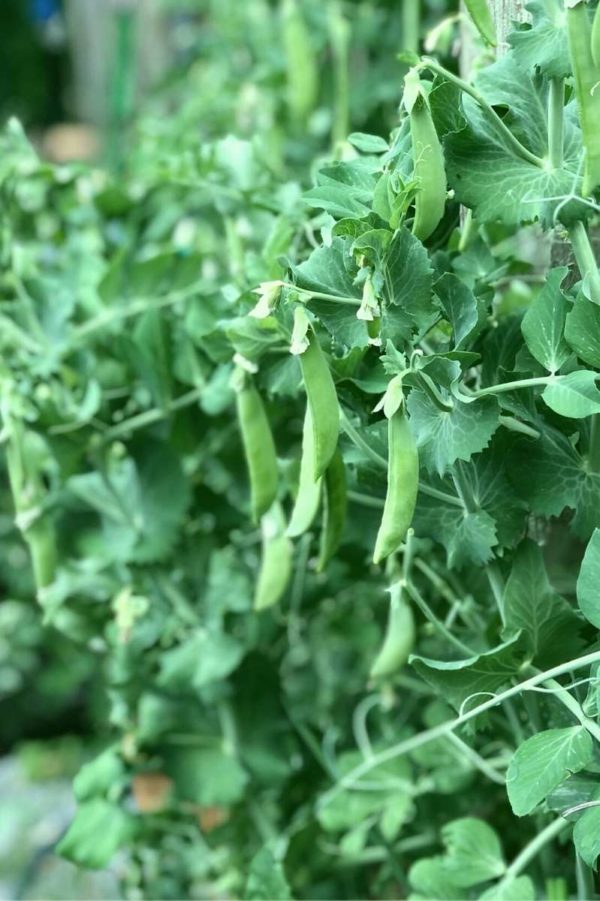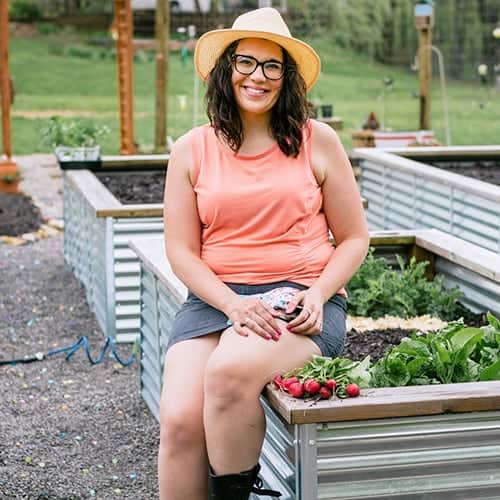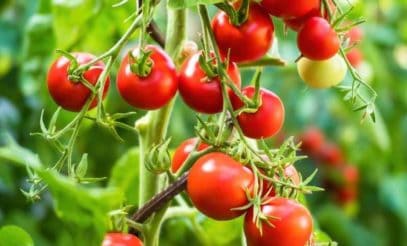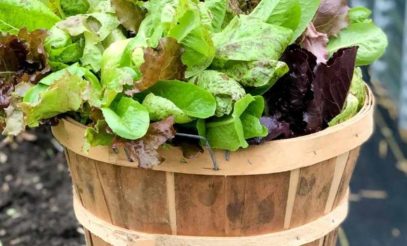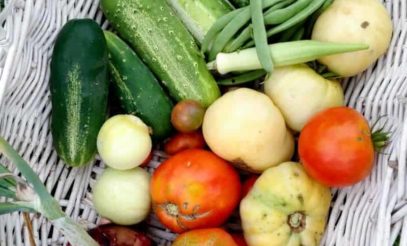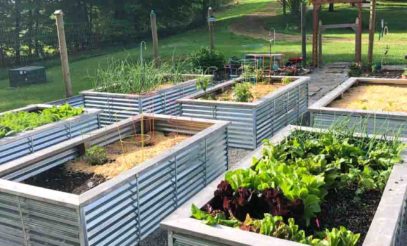A fresh garden pea is one of the most delectable gifts of the early spring garden. Sweet, tender, and packed full of flavor—honestly, they almost never make it up to the house! Snow peas, snap peas, and shelling peas are all so perfectly poppable, that they make the very best springtime garden snack!
Of course, if you do manage to get a few peas up to the kitchen, they are delicious in soups, stews, salads, stir fries, and much more! Make sure you have peas on your garden plan this year. Let’s show you how to plant them!
Table of Contents
Can you tell me when to plant peas?
Peas are one of the very first seeds that can be planted in the garden (and some folks plant them in fall for overwintering). We recommend that as soon as your soil can be worked—even if it’s still a little wet and snow is expected—you get your pea seeds in. Here in the Growfully gardens (zone 6b/7a), that’s right around mid-March—about 6-8 weeks before our last frost date.
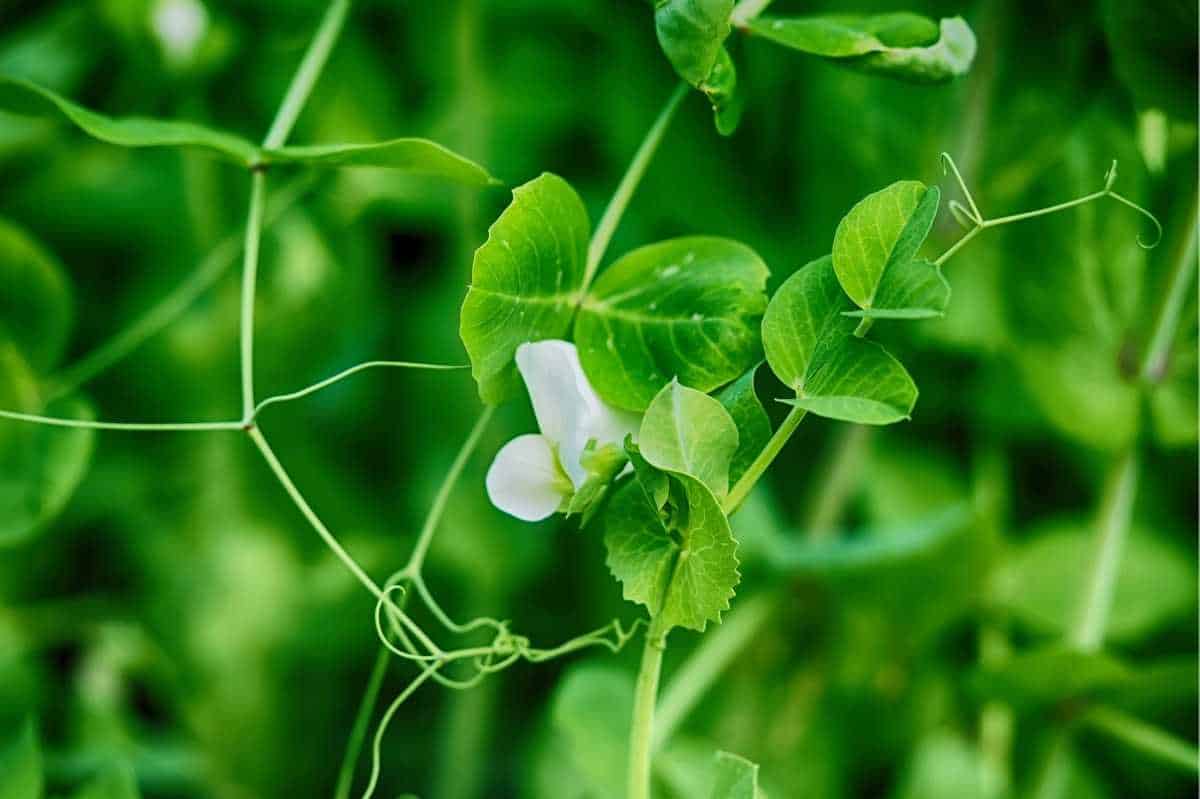
Peas can also be a fall crop in many areas. They can be planted in the late summer or early fall, especially in areas where spring warms too quickly for good pea production. Plant pea seeds approximately 6 to 8 weeks before your first fall frost date.
Growfully Protip
Most peas reach maturity about 60 to 70 days from planting—making them one of the earliest harvests in the spring garden!
Should I plant peas from seeds or seedlings?
Peas really do not like to have their roots disturbed, so it’s best to plant peas from seeds where they are going to grow.

However, if you do live in an area with a particularly cold and wet spring, starting pea seedlings indoors might give you a slight jump in growth. Just be very careful to not disturb the roots when transplanting—you might consider planting pea seeds in peat pots, cow pots, or newspaper pots to reduce soil disturbance.
Do pea plants need a trellis?
Most garden pea plants will produce more and be easier to harvest if they grow up a trellis. Some bush or short pea varieties are more upright, and do not require any sort of support. Check your seed packet to see what kind you have.
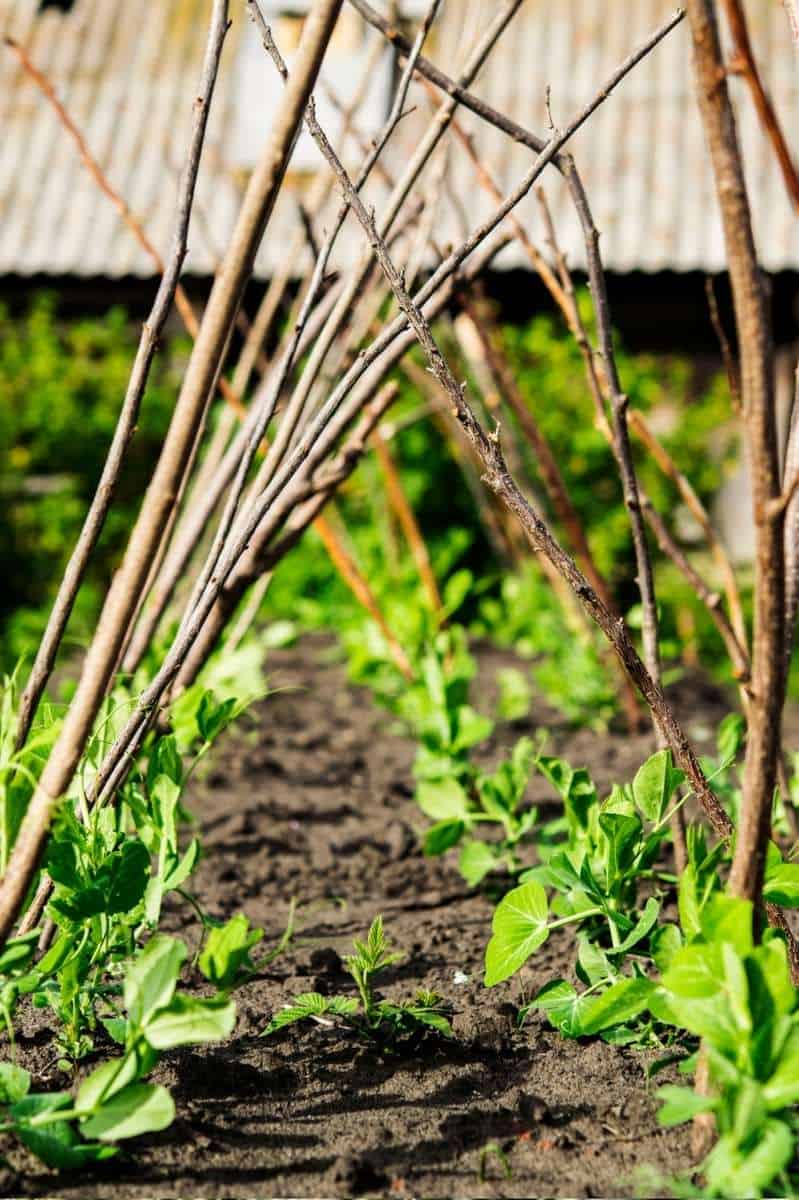
Tall and vining peas will grow up to eight feet tall, depending on the variety. Prepare supports ahead of time, as pea plants release tendrils for climbing early.
Growfully Protip
Have a garden fence? Then you have a pea trellis! We always grow peas up our garden fence in the Growfully gardens.
How do I prepare the soil for peas?
Like all other garden veggies, peas enjoy a loose, rich soil heavy in organic matter. Peas prefer sandy or loamy soil with good drainage, but they will grow in most soils except the heaviest of clays. Make sure to amend your soil with high-quality compost before planting.
Growfully Protip
Peas prefer slightly acidic soil, with a soil pH level of 6.0-7.0.
Make sure your soil nutrients are balanced. Peas need phosphorus and potassium, but the plants will pig out on excess nitrogen. Too much nitrogen will make for beautiful, lush plants that do not produce many flowers or pods.
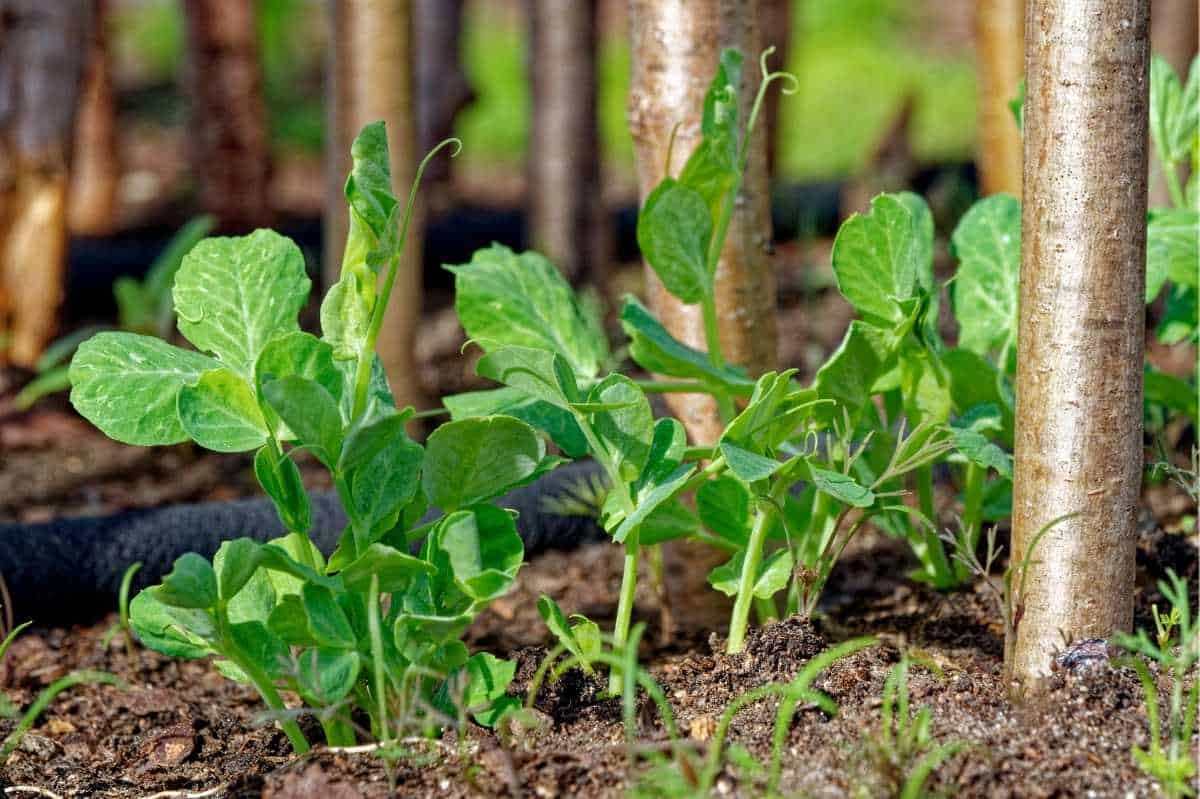
Should peas be part of a crop rotation?
Absolutely—peas are excellent for soil fertility! Many cover crops are actually from the pea and legume family! Plant a nitrogen-loving crop after your pea plants to give your veggies a boost.
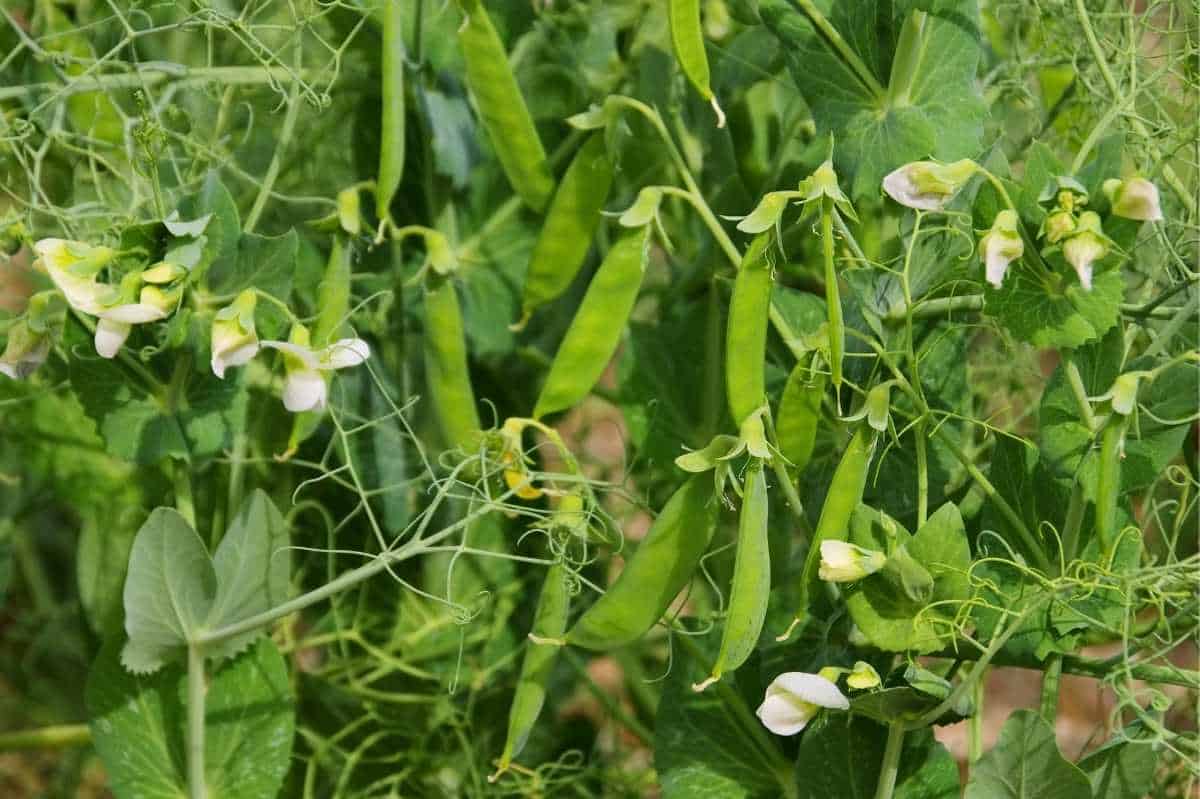
What are some good companion plants for peas?
Because of peas’ nitrogen-fixing ability, they make an excellent companion plant for smaller garden plants that could use a boost of nitrogen and enjoy the shade provided from the tall pea vines. Spinach, lettuce, and radishes are great options to plant under pea plants.
Peas grow well with strongly aromatic herbs and flowers, like cilantro, mint, sage, thyme, and marigold. These can help prevent insect infestations in peas.
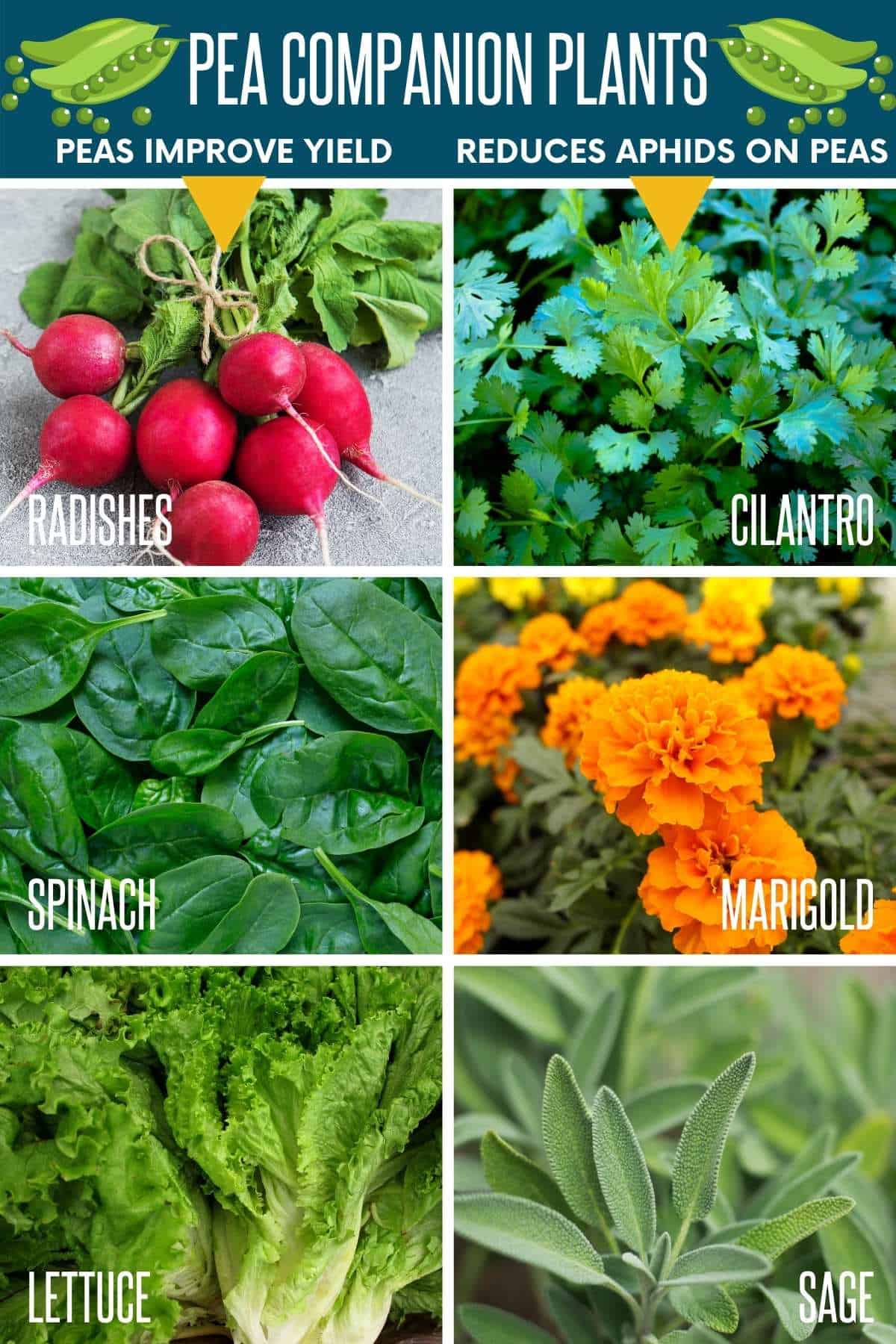
How do I direct sow pea seeds?
Pea seeds are large seeds that are easier to work with—with one caveat. For best germination, it is important to inoculate the seeds with rhizobia bacteria. No worries, this is easy to do! Pea and bean inoculant is available for just a few dollars at most seed companies and garden centers. Just follow the directions on the inoculant to properly coat your seeds. Most inoculants will have you wet and coat the seeds.
Growfully Protip
If you’ve successfully grown peas or legumes in the spot you’re planting this year’s peas, no need to inoculate—the rhizobia bacteria is already present. Make sure to plant at least one round of a non-pea or legume crop in the area in between pea and legume crops.
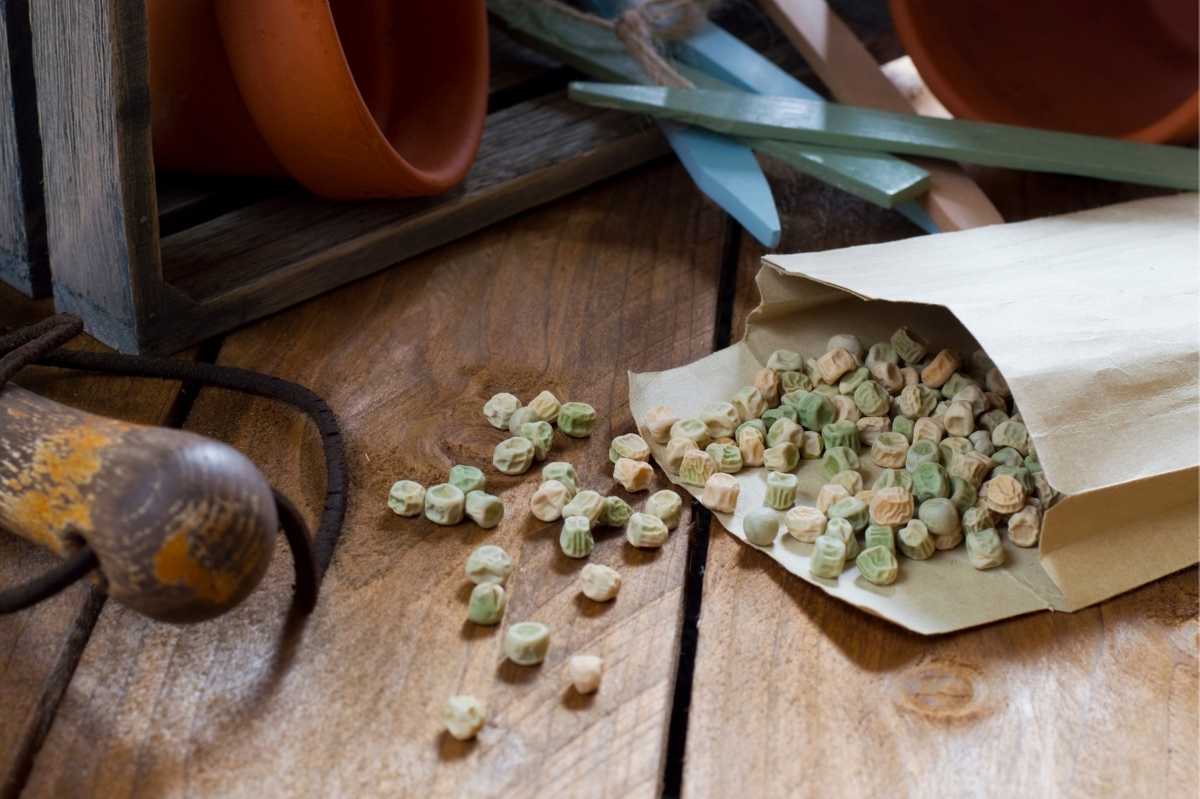
Once your seeds are properly inoculated, they are ready to plant:
- Sow seeds about 1 inch deep and about 2 inches apart. Plant in rows spaced 12–24 inches apart.
- Poke in any seeds that get pushed up out of the soil during the germination period.
- Keep the soil moist during germination (which shouldn’t be a problem during the early spring).
Growfully Protip
For improved germination, soak seeds in water overnight before inoculating and planting.
How do I care for pea plants?
Pea plants are relatively maintenance-free. When seedlings are about two-inches tall, mulch well with straw, chopped leaves, or pine shavings to protect the fragile, shallow roots and to keep the soil moisture even. Keep the bed weeded, but make sure to use gentle weed removal (like a sharp hoe) to remove weeds instead of pulling, for fear of disturbing the pea roots.

Peas produce best when the temperature stays below 70ºF (21ºC). When temps regularly hit above that number, expect production to slow down and the peas to get tough.
We highly recommend you try planting some peas in your garden this spring! You’ll be glad you did when you’re harvesting fresh, tender, sweet veggies earlier than you ever have before. Enjoy!

